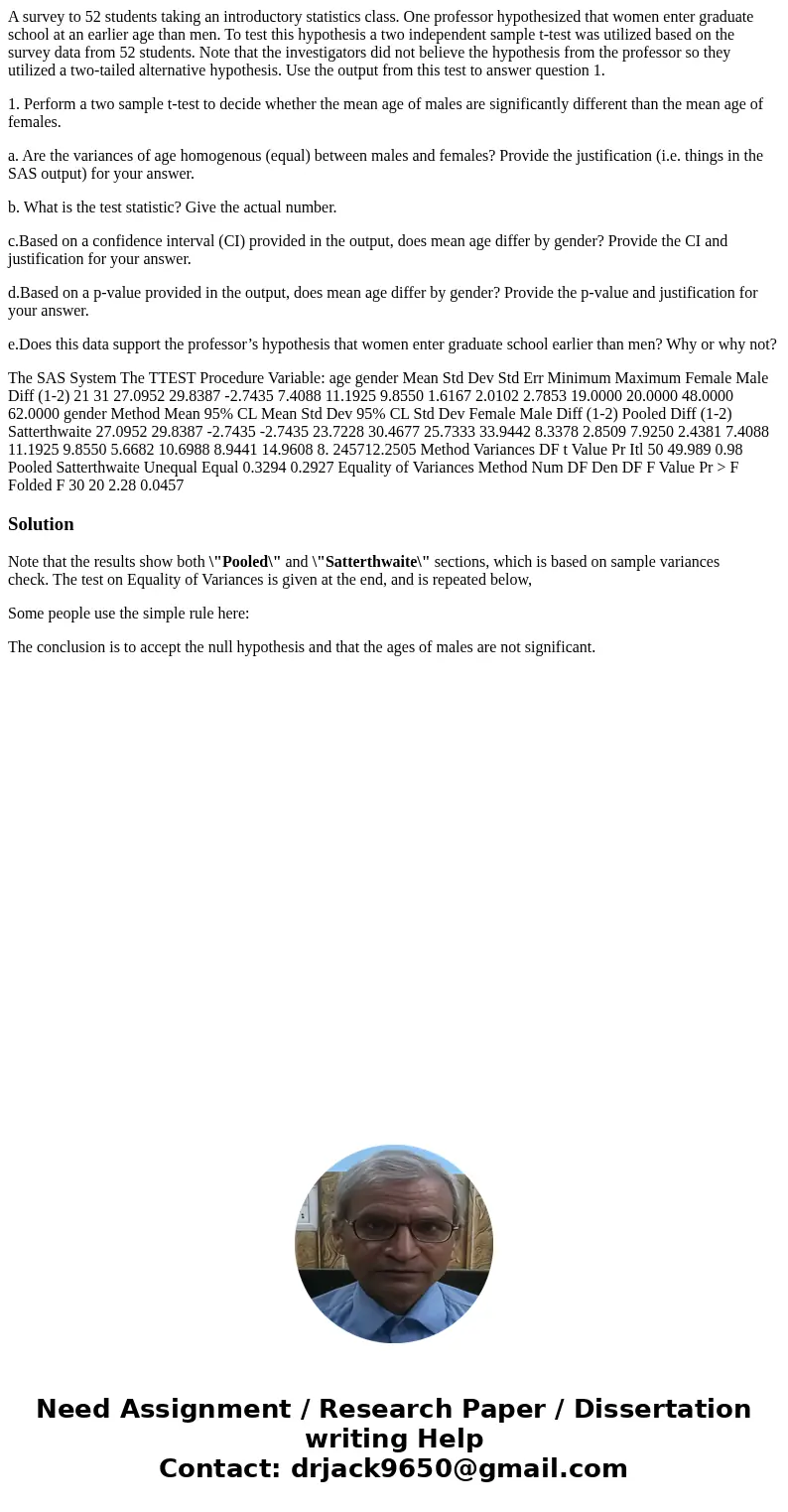A survey to 52 students taking an introductory statistics cl
A survey to 52 students taking an introductory statistics class. One professor hypothesized that women enter graduate school at an earlier age than men. To test this hypothesis a two independent sample t-test was utilized based on the survey data from 52 students. Note that the investigators did not believe the hypothesis from the professor so they utilized a two-tailed alternative hypothesis. Use the output from this test to answer question 1.
1. Perform a two sample t-test to decide whether the mean age of males are significantly different than the mean age of females.
a. Are the variances of age homogenous (equal) between males and females? Provide the justification (i.e. things in the SAS output) for your answer.
b. What is the test statistic? Give the actual number.
c.Based on a confidence interval (CI) provided in the output, does mean age differ by gender? Provide the CI and justification for your answer.
d.Based on a p-value provided in the output, does mean age differ by gender? Provide the p-value and justification for your answer.
e.Does this data support the professor’s hypothesis that women enter graduate school earlier than men? Why or why not?
The SAS System The TTEST Procedure Variable: age gender Mean Std Dev Std Err Minimum Maximum Female Male Diff (1-2) 21 31 27.0952 29.8387 -2.7435 7.4088 11.1925 9.8550 1.6167 2.0102 2.7853 19.0000 20.0000 48.0000 62.0000 gender Method Mean 95% CL Mean Std Dev 95% CL Std Dev Female Male Diff (1-2) Pooled Diff (1-2) Satterthwaite 27.0952 29.8387 -2.7435 -2.7435 23.7228 30.4677 25.7333 33.9442 8.3378 2.8509 7.9250 2.4381 7.4088 11.1925 9.8550 5.6682 10.6988 8.9441 14.9608 8. 245712.2505 Method Variances DF t Value Pr Itl 50 49.989 0.98 Pooled Satterthwaite Unequal Equal 0.3294 0.2927 Equality of Variances Method Num DF Den DF F Value Pr > F Folded F 30 20 2.28 0.0457Solution
Note that the results show both \"Pooled\" and \"Satterthwaite\" sections, which is based on sample variances check. The test on Equality of Variances is given at the end, and is repeated below,
Some people use the simple rule here:
The conclusion is to accept the null hypothesis and that the ages of males are not significant.

 Homework Sourse
Homework Sourse